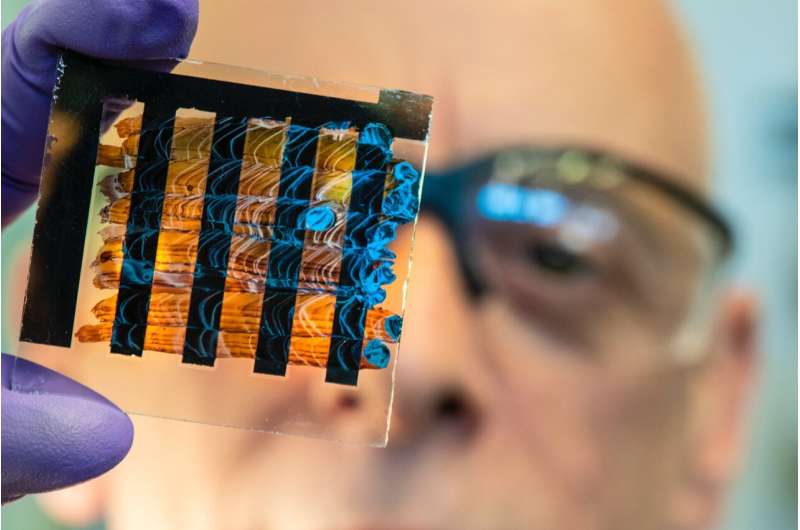A focus on chemistry, not electronics, could help future solar panels reach their potential

A University of Surrey team has found that fusing perovskite materials with an element called ferrocene dramatically increases the efficiency of perovskite-based solar panels. The team found that this focus on the chemistry of solar panels, rather than other approaches that looked at mechanical and electrical components, produced the intended breakthrough.
Thomas Webb, postgraduate research student and project lead from the University of Surrey, said, “Our research scales these perovskite cells to a minute level, focusing on the chemical compounds and their specific problems. For example, normal practice is to coat, or ‘dope’ cells in lithium, but lithium absorbs water, increasing energy deficiency over time.
“We discovered an element within organometallic chemistry called ferrocene that significantly improves efficiency and stabilizes the drop in energy that all solar panels have over time; not to mention it is cheap to produce and solves the water absorption problem.”
Perovskite materials are widely considered to be the successor to silicon because they are lightweight and far cheaper to produce. However, the promise of perovskite has yet to be realized because of the difficulty of replicating lab results in mass production.
Dr. Wei Zhang, the project lead from the University of Surrey, said, “Silicon cells are efficient but costly to produce; perovskite materials are without a doubt the next generation of photovoltaic technologies. There is still a long way to go to ensure these can be implemented on a mass scale, but with these results, we are a generous step closer to making this a reality.”
Professor Stephen Sweeney, the co-supervisor of the research from the University of Surrey, said, “This is a key development to advance this important new material system at a time when dependable renewable energy sources are of critical global importance. This is also a very satisfying example of how interdisciplinary research and complementary expertise across the partner universities has led to a high impact outcome.”
The project has been produced in collaboration with Imperial College London, the University of Nottingham, London Southbank University, University College London, and Fluxim AG. The research was published in Advanced Energy Materials.
Cheaper solar cells could be on the way thanks to new materials
Thomas Webb et al, A Multifaceted Ferrocene Interlayer for Highly Stable and Efficient Lithium Doped Spiro‐OMeTAD‐based Perovskite Solar Cells, Advanced Energy Materials (2022). DOI: 10.1002/aenm.202200666
Citation:
A focus on chemistry, not electronics, could help future solar panels reach their potential (2022, June 20)
retrieved 20 June 2022
from https://techxplore.com/news/2022-06-focus-chemistry-electronics-future-solar.html
This document is subject to copyright. Apart from any fair dealing for the purpose of private study or research, no
part may be reproduced without the written permission. The content is provided for information purposes only.
For all the latest Technology News Click Here
For the latest news and updates, follow us on Google News.

